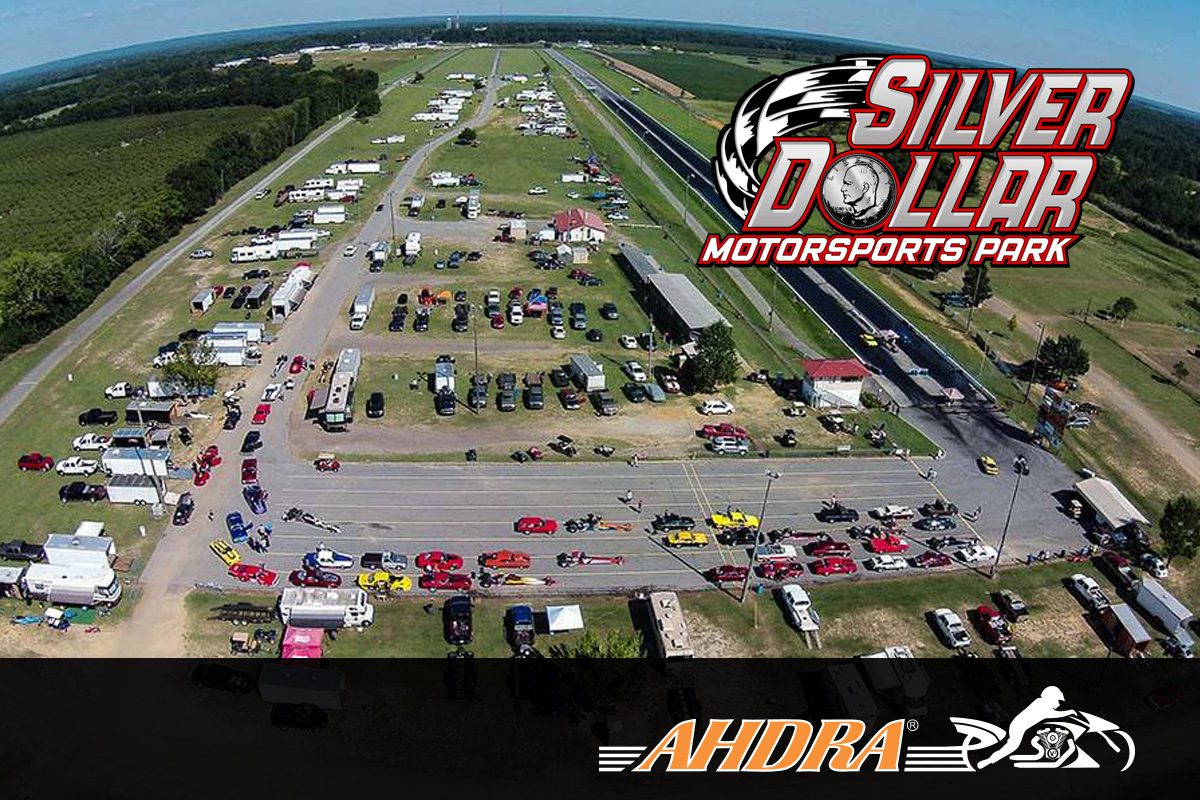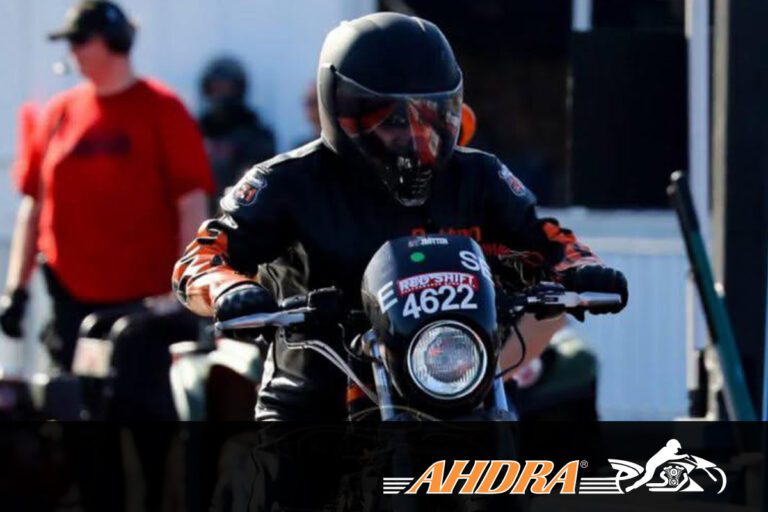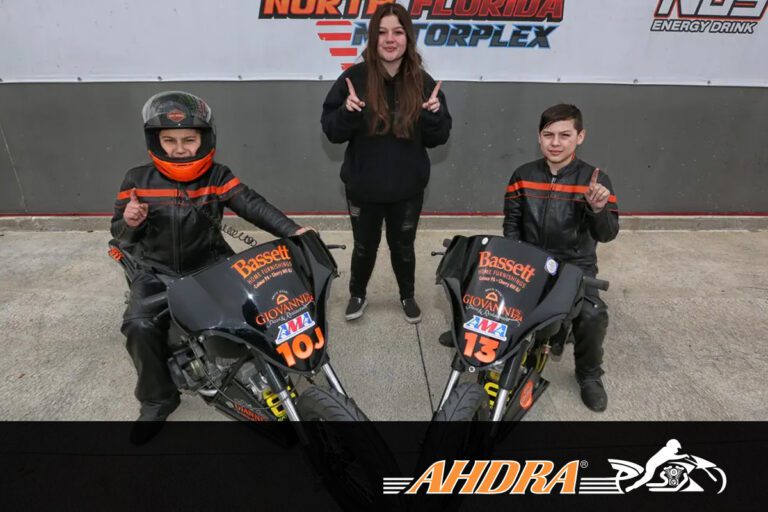
The rumble of engines. The crackle of Harley pipes. The smell of fuel hanging in the Georgia air. For more than 20 years, Silver Dollar Motorsports Park wasn’t just a racetrack—it was the heartbeat of a racing community.
Tucked away in Reynolds, Georgia, the quarter-mile strip became a home for bracket racers, weekend warriors, and eventually, a two-wheeled takeover that brought the thunder in more ways than one.
So how did this legendary strip come to be? We caught up with Ed Swearingen, one of the men behind the curtain, to talk cotton gins, Harleys, and the wild ride that made Silver Dollar a cornerstone of Southeastern drag racing.
Born from a Gin Mill and a Dream
Long before nitro bikes blasted down the lanes, Silver Dollar’s story began in the quiet hum of cotton gins.
“When the cotton industry dried up, I had to pivot,” Ed says. “I kept the company alive by turning it into a three-car racing operation. That’s when I got serious about building a track.”
It wasn’t just a business move—it was a mission. Central Georgia was running out of places to race, and Ed saw an opportunity to bring something special to life.
“There just wasn’t anywhere long enough to run,” he explains. “Atlanta Dragway wasn’t weekly, Warner Robins had shortened to eighth-mile, and land was getting snapped up fast.”
Then came a call from drag racing icon Dick Moroso, who didn’t just support the idea—he offered up a NHRA Winston Drag Racing Series event to kick things off.
By July 1994, Silver Dollar Motorsports Park was open for business, and racers were ready to burn rubber.
More Than Just a Track
From day one, Silver Dollar wasn’t just about straight-line speed. It was about community.
With NHRA ET Series points racing, Sears Craftsman brackets, and street-legal Friday night sessions, the place was alive every weekend. Local racers came to test and tune, families packed the bleachers, and legends were born one pass at a time.
“It was always about giving folks a safe, pro-level place to race—and a damn good time while doing it,” Ed says.
And for a lot of racers, Silver Dollar felt like home.
Then Came the Harleys
At first, motorcycles were just a small part of the scene. But that changed fast when Big John and Dee rolled into town.
“They brought the All-Harley crowd, and it changed everything,” Ed remembers. “The energy. The showmanship. The sound. It was electric.”
What started as one event turned into a movement. The All-Harley races brought new faces, new fans, and a whole new layer of grit and excitement to the Georgia strip.
Big John: Bigger Than Life
If Silver Dollar had a patron saint of V-Twin chaos, it was Big John.
“He introduced himself before we even opened,” Ed says. “When Warner Robins closed, he brought his Harley crowd straight to us. It was a perfect fit.”
John wasn’t just a promoter—he was a connector. A catalyst. A larger-than-life personality who knew how to bring people (and bikes) together.
But life took a rough turn. After a tragic accident and a prison sentence, John left the scene.
“It was hard,” Ed says. “We visited him while he was inside. His sentence felt unfair. He carried that weight.”
Through it all, the bond between Ed, John, Dee, and Ed’s wife Dorothy never broke. Racing might’ve brought them together—but friendship kept them close.
Dee: The Backbone of the Movement
While John lit the match, it was Dee who kept the fire burning.
“Dee was incredible,” Ed says. “She kept everything going when John couldn’t. Her presence at the track meant the world.”
After her sudden passing, the racing world felt the loss deeply. But her impact still echoes in every pass, every event, and every racer she inspired.
AMRA Takes the Stage
As motorcycle racing grew, so did the need for structure. That’s when the American Motorcycle Racing Association (AMRA) stepped in.
With Marty VandenHeuvel leading the charge, AMRA events brought a national spotlight to Silver Dollar. Points. Prestige. Professionalism.
“They had their act together,” Ed says. “We were proud to host them. Every year, it just got bigger.”
TV crews rolled in. Sponsors lined up. At one point, Silver Dollar hosted a full AHDRA-sanctioned event—complete with cameras, crowds, and bikes that felt like they belonged on ESPN.
Heroes, Veterans & the Ones Who Never Left
As the years rolled on, one thing became clear: many of Silver Dollar’s biggest supporters were Vietnam veterans. Tough. Loyal. All in.
“They were passionate,” Ed says. “They loved racing. Loved America. And a lot of them never got the recognition they deserved.”
But time is a tricky thing. That generation started to fade, and younger crowds didn’t fill the stands the way they once did.
A Difficult Goodbye
In 2017, after decades of building something special, Ed made the call to sell the track.
“It was a health thing,” he explains. “Spina bifida doesn’t give you a lot of wiggle room. But it was hard to let go.”
He passed the keys to the Persico family, hoping the next chapter would carry on the spirit he and his crew had spent decades building.
Still Burning Bright
Today, the roar of engines still echoes across Reynolds, Georgia. The track lives on. The legends live on. And the memories? They’re etched into the asphalt.
“We didn’t just build a racetrack,” Ed says. “We built a family. The friendships. The stories. The wild nights—we’ll never forget them.”
For those who were there, Silver Dollar Motorsports Park wasn’t just a place to race.
It was a place to belong.





